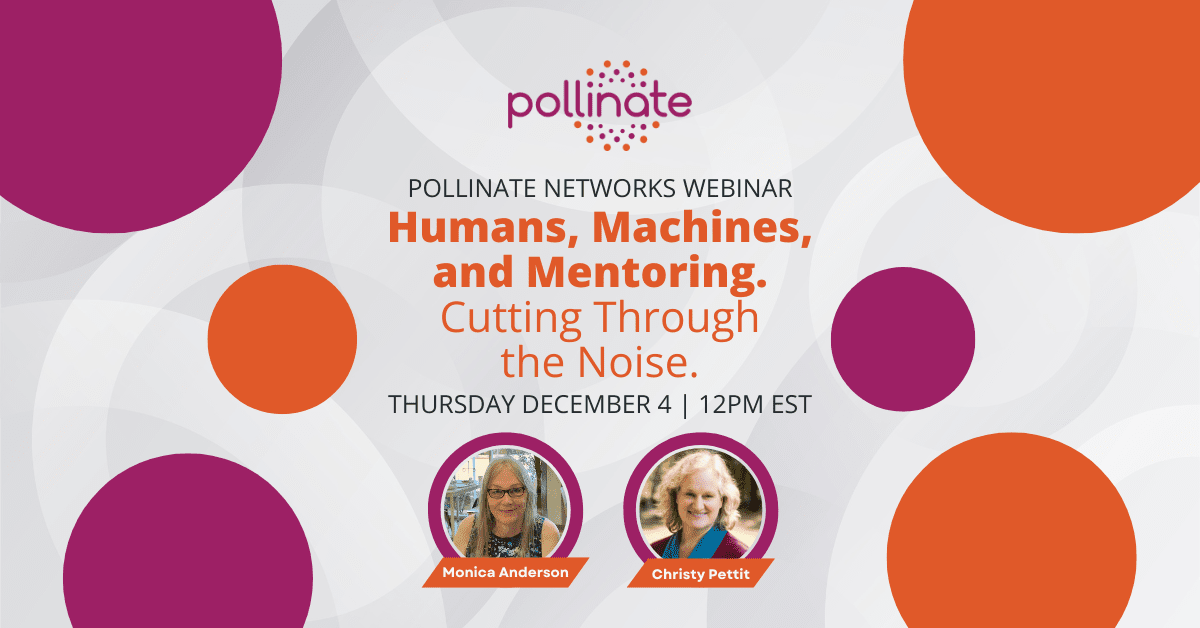Networking is a critical leadership skill, but it can feel daunting to put yourself out there to make the most of the opportunities that exist.
To support young women in taking on leadership roles in Canada’s nature and conservancy ecosystem, Nature Canada’s Women for Nature initiative hosted a Networking for Success webinar as part of its mentoring program in partnership with Pollinate Networks Inc.
The webinar, co-moderated by Janet Bax, Women for Nature Co-chair and mentorships project leader, and Pollinate CEO Christy Pettit, gleaned insights from the following guest panelists:
- Beth MacNeil, Assistant Deputy Minister (ADM), National Capital Region, Canadian Forest Service
- Eleanor Fast, Executive Director, Equal Voice, and
- Elizabeth Kilvert, Owner, The Unrefined Olive.
All three panelists stressed the importance of networking for career and personal growth, and offered the following advice and tips for success:
1. Engage widely
Given today’s complex challenges in conservation and nature, “you need to take a relational leadership approach, and part of that is establishing a network with all the players in the system,” said MacNeil, the first female ADM to be appointed to the Canadian Forest Service. She urged adopting a broad perspective: “don’t limit it to those you think might or might not have an interest, just invite everyone in.”
Fast agreed: “Build those networks outside of your narrow field… Everything is going to change in the next few years in all sectors… and people who can bring in networks from other sectors are going to be the people who are going to be the leaders of the future.”
(To that point, Jodi Joy Richardson, Nature Canada’s Director of Development, recommended the book Range by David Epstein about the importance of not siloing yourself too much as a specialist, recognizing it’s better to engage widely and think outside the box.)
2. Determine your purpose – what’s your ask?
It’s also important to establish the purpose of your networking efforts and specifically what you are asking of your contacts, added Kilvert, who moved from a civil service career to launch her first business in 2012, specializing in olive oils and local specialty foods. Are you fundraising for an NGO, seeking mentorship or future collaboration, or promoting your business to prospective clients?
3. Be prepared
“Networking is hugely important and I think we have to be very deliberate about it and we need to be prepared. Think about who you want to know and figure out a way to get there,” Fast said. Before an event, try to get the guest list and go through it to identify the people you want to meet at the event, she suggested. “Google them so you know what they look like. Be prepared with what you want to say to them, with what you want to ask them for.” Another tactic from Kilvert: see if you know someone at the event who can introduce you to someone you want to meet.
4. Be an active listener
The ability to establish and nurture relationships is critical, and active listening is key to making that happen, MacNeil stressed. “People will know if you’re paying attention to what they’ve been saying to you,” rather than just going through the motions.
5. Be a connector and a catalyst
Introduce people to one another to further relationships and agendas. “I love to be a connector – that’s my key focus,” Kilvert said. “I love to go to the person who’s by themselves in the room; we talk a little about who we are and if I see someone in the room I feel would be a valuable connection, I like to introduce them.”
“We want to see our networks help people,” added Pettit: “It’s an iterative process – whom do I know who can not just help me but help others in my network?”
6. Express your authentic self
Respect the dress code but don’t be afraid to express your authentic self to show people who you truly are – by wearing a unique piece of jewelry, for example, Kilvert urged. A school ring can be a conversation starter and can build common ground to solidify a relationship, as can shared interests, such as a love of monarch butterflies or your favourite vacation spots.
7. Follow up
“Afterwards, follow up with people you’ve met as soon as you can whether it’s an email or on LinkedIn; people have a lot of conversations and it’s that follow up that people remember,” Fast recommended. Building on the active listening – reflect back something they’re interested in with a comment in your follow up. It shows you are truly interested and engaged.
8. Combine face-to-face and social media interaction
All three panelists agreed face-to-face interactions are incredibly important and are their first choice for meetings, while recognizing the complementary value of social media.
“You can’t beat a personal interaction and a personal face-to-face relationship but social media has made it much easier to build on those relationships and even sometimes initiate those relationships,” Fast said.
Social media channels allow you to look up contacts, make an initial contact and keep in touch but it’s important to avoid being “too stalky.” It’s about building common ground and finding an appropriate balance.
At the same time, it’s ok to share some personal details on your social networks. “I like doing that because folks see that it is possible in my realm to make it into a senior position in the federal government and still be very active and involved in your children’s lives. I think that’s healthy for women to see that other women can be moms and they can be leaders,” MacNeil said.
Effective networking is ideally a two-pronged approach, observed Bax. The first is a very deliberate approach used to achieve an objective. The second is advancing social capital, an intergenerational approach. “If you want to grow old well, you need young people, people of the same age and older people. The same thing goes for networking.”
The third Women for Nature Community of Practice Webinar – Lessons Learned – takes place Aug. 8 at 12 noon.
Also see our blog post about leading with confidence: Women in Leadership: 7 Qualities to Cultivate



